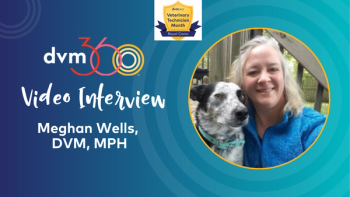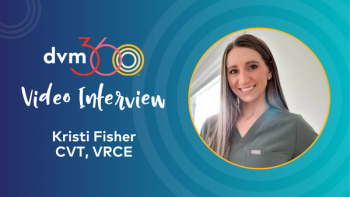
Blog: Can we be too accommodating to clients?
When the doors swinging, how do you balance the clients needs with the mental and physical heath of your support team?
It's official. The economy has recovered. At least according to the volume of business in our mixed-animal practice located in a small rural town. Since Jan. 2, our practice has consistently surpassed any standards for revenue set in the past five years, creating a nice-but also challenging-problem.
Since the beginning of time, and specifically since 2009, we have been in a cyclical process of trying to create demand for veterinary services, followed by an effort to find the best way to react to that demand when it materializes. Since I've been the practice manager of our business, we've grown from a part-time doctor to a full time doctor to two doctors and so on. A month ago I began the recruitment process for our fifth veterinarian.
Typically, it goes something like this: We expand our veterinary team by adding a doctor, which is almost always accomplished a full three to six months after the need for one became an “emergency.” Once they arrive and settle in to a productive routine, we find ourselves with some empty time in our schedule. If I were in control of the world, I'd be able to hire doctors in half increments rather than whole ones. And nobody seems to want to work part time. To fill that time, we become very, very accommodating to clients, seeing them at or near the time they wish, scheduling their needed surgery or dentistry tomorrow instead of next week or month and fitting them into our horse schedule on demand. It works. We experience rapid growth and within a year or two, we're back to square one, ready to expand again.
While this routine has been familiar to our practice since the early 1990s, it's been even more clear during the recent economic downturn. Minus the rapid growth, of course. From 2009 to 2014 we slowly downsized our support team, electing to leave positions open when vacated. We maintained status quo in almost every area, waiting for the good old days to return. Once everyone became convinced that there would be no more “good old days,” we relied on a tested formula. We put ourselves in a position to accommodate everyone, everyday, for everything, and soon enough, we were slowly recapturing the traffic that was lost during the recession. What few clients were spending money knew that it had become their market and we were told often that someone else would fill their needs if we couldn't.
Eventually, it worked too well and we found ourselves in a bind late last year. Our three associates were becoming burned out and felt like we weren't giving them enough appointment time to take proper care of a case. There's no question that they were right, and the boss put his stamp on expanding our appointment times from 20 minutes to 30 minutes. While I agreed, and absolutely supported any scenario that would ease the burden on our doctors, I also wanted to know what happens to the average 33 percent of schedulable time that's now lost. Do we turn clients away if their needs exceed our availability? Do we stop accepting new clients altogether? Those concepts made my stomach turn. The prospect of maintaining our claim of compassionate care would be hard to balance with telling 10 clients every day that we just couldn't see them.
We decided to start looking for another associate and the whole team agreed that we could gut it out until one arrived. They understood that doing so means seeing double-booked appointments, seeing their lunch time shortened on occasion and probably staying at work later than normal. While our recruitment process has started, it's nowhere near completed. And since we made the decision and said it out loud, our days have become even busier. All of the clients that we over-accommodated during the downturn have trouble understanding why a doctor isn't just sitting around waiting to see them. Unfortunately, we did this to ourselves, which leads me to the question. How much accommodation is too much?
I may never have the answer. I will always feel strongly that accommodating clients should always happen when it can. But it probably should happen far less when it can't. At the height of our stress and over-scheduling, an email came from a client. She took the time and several paragraphs to thank us for finding the time to see her recently during an already crazy day. She praised our team for being so kind and specifically noted that our doctor took a lot of time to explain her cat's condition. The cat recovered and is better than ever. It was just what we all needed to erase the frustration and remind us why we do this.
We should have a new associate on board in three months. The second he or she walks in the door, the pendulum will swing right back to the other side, and we will fill that open schedule by being as accommodating as anyone can be.
Kyle Palmer, CVT, is a FirstlineEditorial Advisory Board member and a practice manager at Silver Creek Animal Clinic in Silverton, Ore. Please send your questions or comments to
Newsletter
From exam room tips to practice management insights, get trusted veterinary news delivered straight to your inbox—subscribe to dvm360.





